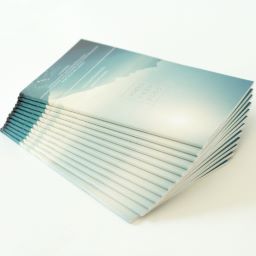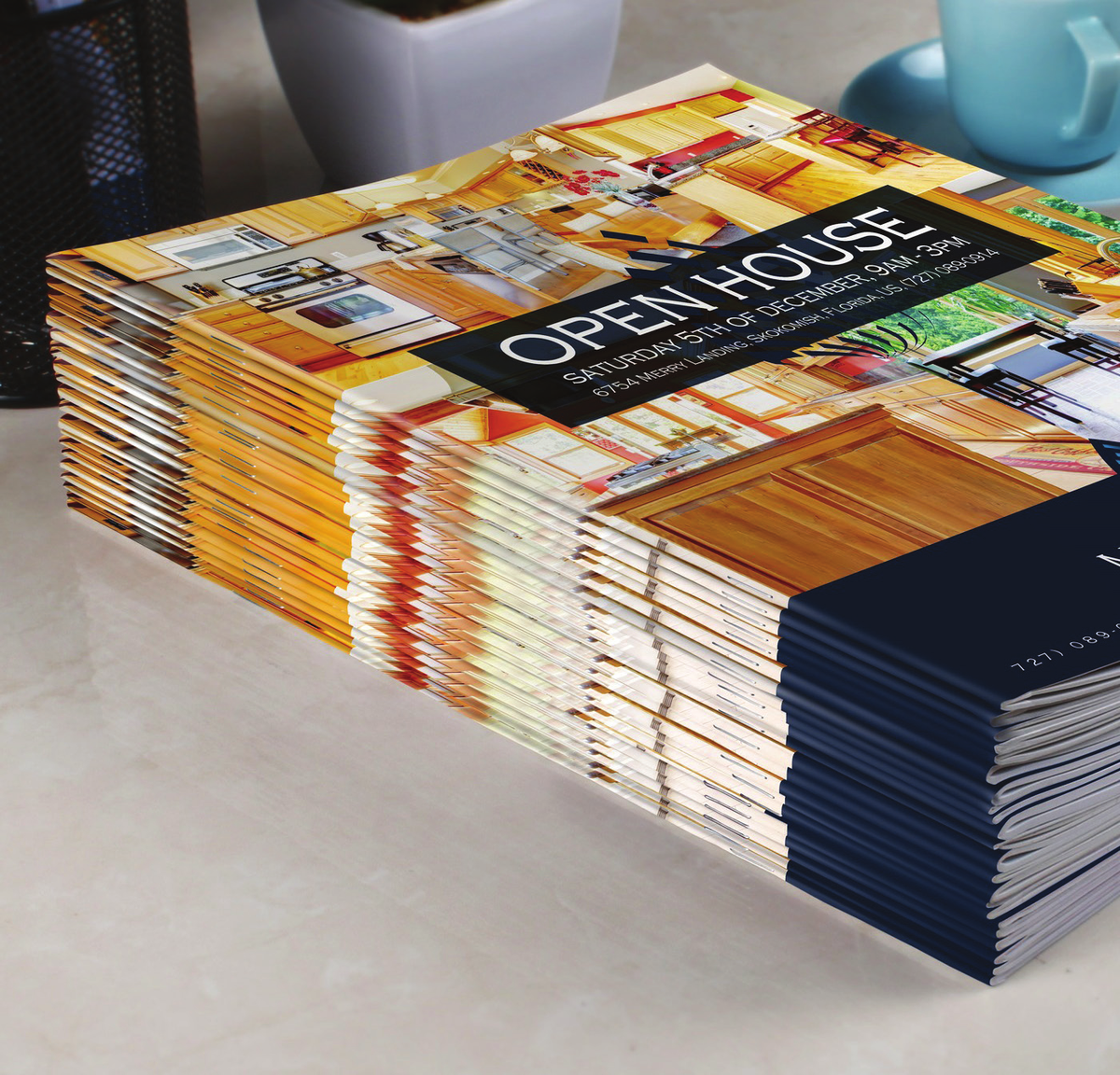How to Design Personalized Campaigns with Variable Data Booklet Printing
How to Design Personalized Campaigns with Variable Data Booklet Printing
Blog Article
The Important Guide to Understanding Booklet Printing Options and Techniques
The procedure of booklet printing entails numerous factors to consider that can considerably impact the end product. From selecting the appropriate layout and dimension to comprehending the nuances of binding approaches, each selection plays an essential role. In addition, aspects such as paper stock and printing methods further affect the efficiency of the booklet. As one browses these choices, it ends up being critical to comprehend exactly how they adjoin and what that indicates for the overall outcome.
Recognizing Booklet Layouts and Sizes
When taking into consideration booklet printing, understanding the different styles and sizes offered is crucial for achieving the desired discussion. Booklets can be created in numerous styles, consisting of saddle-stitched, spiral-bound, and perfect-bound, each offering unique benefits. Typical dimensions range from common letter (8.5 x 11 inches) to smaller alternatives like A5 (5.8 x 8.3 inches), permitting for versatility based upon content and target audience.Selecting the proper dimension can affect both the design and viewers involvement. Larger sizes may suit aesthetically driven content, while smaller formats may be extra portable and easy to use. Furthermore, the number of web pages affects the option of binding technique, as thicker pamphlets may need stronger bindings. Inevitably, understanding these elements enables a more tailored technique, making certain that the final product straightens with the desired message and visual, enhancing the overall efficiency of the interaction.
Picking the Right Paper Supply

Binding Approaches: Factors To Consider and alternatives
When it involves binding techniques for brochures, a number of choices are readily available, each with distinctive advantages. Saddle stitch binding offers a cost-effective solution for thinner booklets, while best binding methods provide a more refined seek thicker magazines. Wire-O binding stands out for its toughness and ease of use, making it optimal for papers that call for adaptability.
Saddle Stitch Binding
Saddle stitch binding offers a economical and sensible remedy for constructing pamphlets, making it a popular choice among businesses and publishers. This binding method involves folding sheets of paper in fifty percent and stapling them along the fold line, developing a cool and well organized appearance. Typically suitable for pamphlets with a reduced page count, saddle stitching is perfect for magazines, brochures, and educational products. The simpleness of this method allows for fast manufacturing and is typically preferred for short runs or promotional items. It is essential to keep in mind that saddle stitch binding may not be suitable for thicker pamphlets, as the spinal column may not hold up under increased weight. On the whole, it stays a reputable option for several printing tasks.
Perfect Binding Methods
Perfect binding is an extensively used method that offers a specialist and refined finish to brochures and publications. This approach includes gluing the web pages together at the spine utilizing a strong adhesive, enabling for a tidy edge and the ability to hold a bigger number of pages contrasted to saddle stitching. Perfect binding is specifically appropriate for thicker booklets, such as directories and yearly reports, where a tough, flat back is desired. Furthermore, it offers the choice for a published cover that can be designed to boost visual charm. Nonetheless, considerations such as page count, paper weight, and the intended use of the pamphlet should be taken into account, as they can influence resilience and general top quality.
Wire-O Binding Alternatives
Wire-O binding, understood for its sturdiness and adaptability, supplies an excellent alternative for booklets that need easy page transforming and a specialist look. This binding method employs a collection of steel loopholes that hold web pages securely, enabling them to lie level when open. It is particularly suitable for guidebooks, catalogs, and discussions as a result of its durable nature. Wire-O binding is offered in various colors and sizes, suiting various page matters and densities. Furthermore, it allows the incorporation of covers and tabs, enhancing the booklet's total visual. Factors to consider for Wire-O binding consist of the option of wire shade, the dimension of the loops, and the level of modification desired, every one of which can exceptionally influence the last product's look and functionality.
Digital vs. Offset Printing: Which Is Best for You?
When picking a printing technique for booklets, recognizing the distinctions in between digital and offset printing is important. Digital printing makes use of contemporary innovation to create top quality prints quickly and cost effectively, making it optimal for brief runs or tasks needing fast turnaround times. It permits personalization, providing the capacity to publish on-demand with very little waste.In comparison, offset printing is a traditional approach that masters generating big quantities with constant quality. It includes moving ink from a plate to a rubber blanket, after that to the paper, which results in vivid colors and exact information. However, offset printing generally requires longer configuration times and is a lot more economical for larger volumes.Ultimately, the choice between electronic and counter printing relies on project demands, spending plan, and desired quantity. For tiny, time-sensitive tasks, electronic could be the best choice, while offset might be more effective for bigger, top quality productions.

Creating Your Booklet: Tips and Finest Practices
When developing a pamphlet, cautious interest to format, font style selection, and shade usage can greatly improve its efficiency. A well-structured design guides the visitor's eye, while suitable fonts guarantee readability and communicate the wanted tone. Furthermore, reliable use shade can stimulate emotions and highlight crucial details, making the general style more impactful.
Picking the Right Format
How can one successfully choose the ideal format for a brochure? Initially, it is important to review the brochure's function and target market. A clean, organized design boosts readability and involvement. Utilizing a grid system can aid in straightening components continually, developing an expert look. Furthermore, including aesthetic power structure with differing sizes and placements of images and message can assist the reader's eye and emphasize essential info. It is likewise important to leave enough white click here for more info room, which stops overcrowding and enables better emphasis. Ultimately, evaluating different designs via mock-ups can offer understanding right into exactly how the style does in real-world scenarios, ensuring that the end product fulfills both useful and visual requirements.
Picking Ideal Font Styles
An appropriate typeface can substantially boost the general layout of a brochure, complementing the format and reinforcing the content's message. The selection of typefaces ought to consider readability, especially for body text, as it ensures the details is easily accessible to all visitors. Sans-serif typefaces are often chosen for electronic formats, while serif font styles can provide a typical feeling in printed materials. It's suggested to restrict font choices to two or 3 to preserve aesthetic comprehensibility. In addition, font style size plays an important function; headings must be not frustrating but distinctive, while body text ought to fit for reading. When picking typefaces, placement with the pamphlet's style and target audience is essential for reliable interaction and aesthetic appeal.
Reliable Usage of Color
Shade functions as an effective tool in pamphlet style, directing and forming perceptions viewers feelings. It can evoke feelings of trust, calmness, or excitement, relying on the colors chosen. Designers need to take into consideration shade concept principles, making sure that the picked palette aligns with the brochure's message and target market. Utilizing cozy shades like red and orange can develop necessity, while cooler tones like environment-friendly and blue foster tranquility.Additionally, contrast plays a vital role; complementary colors can enhance readability and visual appeal. Consistency in color usage across pages additionally reinforces brand name identification and communication. Eventually, efficient color execution not just records focus yet additionally reinforces the booklet's purpose, making it a necessary element of effective style.
Completing Touches: Coatings and Special Impacts
While numerous think about the content and layout of a pamphlet one of the most crucial aspects, the finishing touches, such as finishings and unique results, play a crucial duty in improving its general appeal. Coatings can provide defense and longevity, making certain that the pamphlet stands up to wear and tear. Matte coatings use an innovative, non-reflective surface, while shiny finishes can make shades show up even more captivating and vivid. Special results, like embossing or aluminum foil stamping, add a responsive measurement that can create a remarkable perception. These strategies can highlight details areas, accentuating important details or creating aesthetic interest. In addition, UV finishing can provide a high-shine coating that elevates the general look.Together, these finishing touches not just enhance the pamphlet's aesthetic however additionally interact professionalism and trust and focus to detail, inevitably leaving a long lasting influence on the viewers.
Expense Considerations for Brochure Printing
Recognizing the various expense factors to consider for pamphlet printing is necessary for companies and businesses aiming to maximize their spending plans. Secret aspects affecting costs include the option of ink, paper, and binding approaches. Better products, such as premium paper or specialized inks, usually boost the total expense. Furthermore, the size and web page matter of the booklet play a significant function; bigger pamphlets require more resources and time to produce.Another important factor to consider is the printing technique, whether digital or balanced out, as each has its very own prices framework and suitability for different quantities. Companies ought to likewise factor in style costs, which can vary based upon intricacy and making use of specialist services. Eventually, shipping and handling charges can contribute to the total, particularly for huge orders. By examining these elements, companies can make informed choices that straighten with their economic abilities while accomplishing the desired quality in their published products.
Often Asked Questions
What Are the Environmental Impacts of Booklet Printing?
The ecological influences of brochure printing include deforestation from paper manufacturing, carbon exhausts from transport, and waste generation from disposed of materials - Booklet Printing. Lasting methods, such as utilizing recycled paper and eco-friendly inks, can alleviate these impacts
How Can I Ensure Shade Accuracy in My Pamphlet?
To ensure shade precision in a booklet, one need to make use of calibrated displays, utilize expert color profiles, perform test prints, and select top quality printing solutions that use color matching and proofing alternatives for finest outcomes.
What Is the Normal Turnaround Time for Pamphlet Printing?
The common turnaround time for pamphlet printing varies relying on the complexity get more and amount - Booklet Printing. Typically, it varies from a couple of days to two weeks, influenced by factors such as printing approaches and completing needs
Are There Minimum Order Quantities for Pamphlet Printing?

Can I Print Pamphlets in Numerous Languages?
Publishing booklets in several languages is possible. Numerous printing services use options for multilingual or multilingual layouts, permitting efficient communication. Mindful planning warranties that develop elements fit numerous languages without jeopardizing readability or appearances. In addition, factors such as paper supply and printing strategies more affect the performance of the pamphlet. When taking into consideration pamphlet printing, recognizing the various layouts and sizes available is important for achieving the desired discussion. When picking a printing technique for brochures, comprehending the official source differences between electronic and counter printing is necessary. Furthermore, the dimension and page count of the pamphlet play a substantial function; larger pamphlets need more sources and time to produce.Another vital consideration is the printing technique, whether electronic or countered, as each has its own pricing framework and viability for different amounts. The ecological impacts of pamphlet printing consist of deforestation from paper production, carbon exhausts from transportation, and waste generation from discarded products.
Report this page